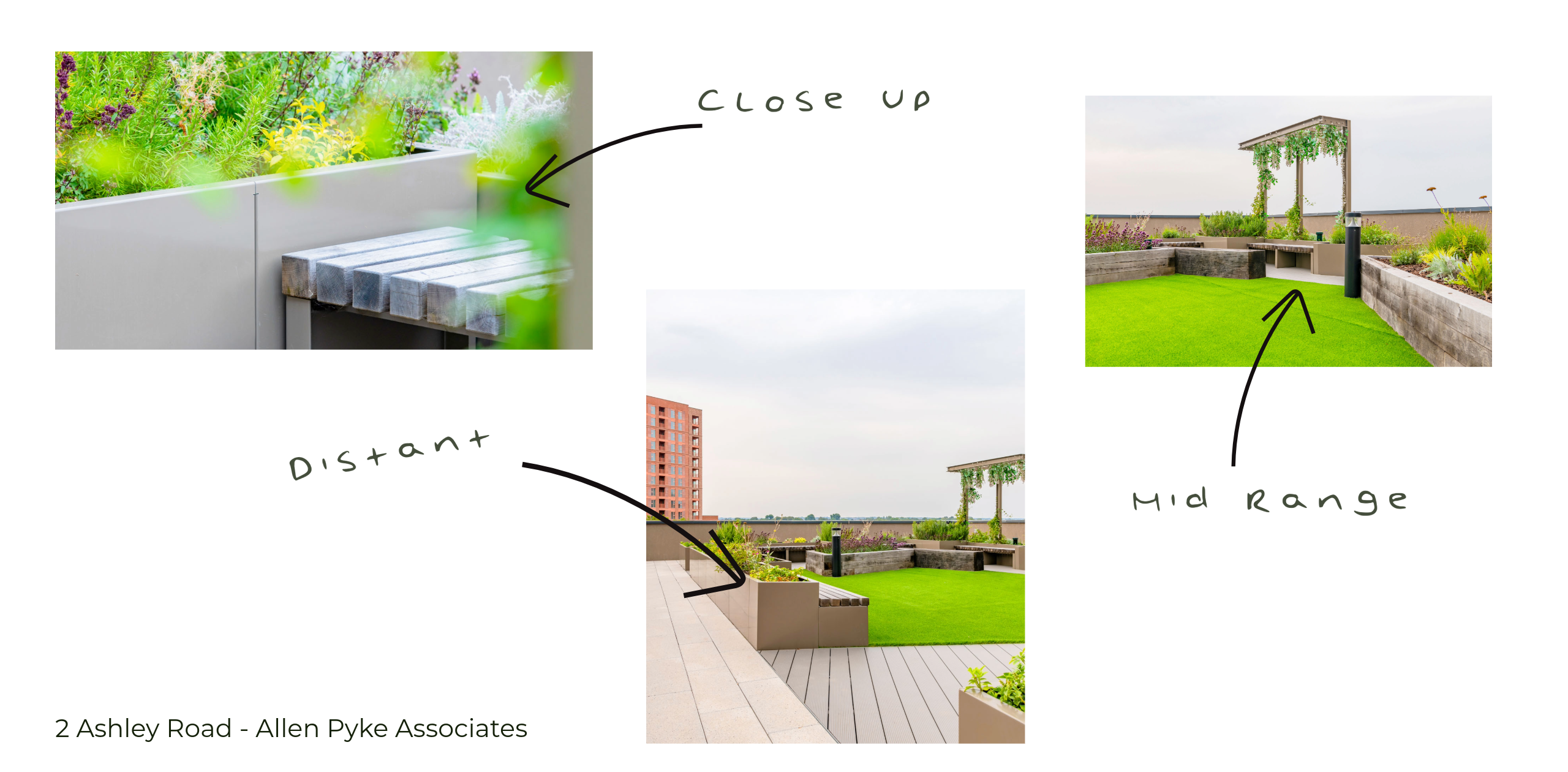As a landscape architect, the way you shape elevation and structure directly influences how people experience a space. A subtle rise, a thoughtfully placed planter, or a perfectly framed view can completely transform perceptions, turning an ordinary outdoor area into a place of wonder and connection.
Here, we explore how you can use elevation and structure to craft engaging, dynamic spaces that invite exploration, create emotional resonance, and leave a lasting impression.
1. Elevation as Your Secret Design Tool
Elevation changes can bring depth and excitement to your designs. Even small shifts in height can define spaces, guide movement, and evoke a sense of discovery.
- Practical Ideas:
Integrate raised planters, terraces, or even subtle grade changes into your designs. Elevated seating areas become quiet retreats, while a gentle slope can draw the eye toward key focal points, such as a piece of art or a dramatic view.
- How It Shapes Perception:
A raised element, like a planter or seating area, feels closer and more accessible. Meanwhile, a sunken space can feel cosy and secluded. These simple techniques help you guide visitors’ experiences and create emotional connections to the landscape.

2. Using Structures to Frame Experiences
Structures such as walls, pergolas, and seating are more than functional—they’re tools to shape how people see and feel about a space.
- Frame the View:
Use structures to draw the eye. A wall can frame a distant skyline, while a pergola can direct attention upward, emphasizing a sense of openness. These elements act as focal points, helping visitors interpret and navigate the space.
- Create Functional Zones:
Combine structural elements with elevation changes to define distinct areas. For example, raised seating with integrated timber planters creates informal boundaries that feel seamless and natural.
3. Elevation and Lighting: The Dynamic Duo
Lighting amplifies the impact of elevation, transforming how spaces are perceived. The interplay of light and shadow emphasizes textures and materials, making every surface part of the experience.
- Where to Start:
- Add recessed lighting under stairs or along planters to highlight height changes.
- Use uplights to enhance the drama of pergolas, trees, or retaining walls, creating dynamic effects.
- Why It Works:
Thoughtful lighting enhances the atmosphere at night, ensuring your design has as much impact after sunset as it does during the day.

4. Multi-Level Design for Exploration and Discovery
Multi-level designs create a journey through your landscape, encouraging people to explore and experience the space from different perspectives.
- Design Tips:
Incorporate steps, ramps, or terraced planters to add layers of interest. Elevated platforms can offer new vantage points, while lower areas create intimate, sheltered spaces.
- Why It Matters:
Levels provide variety and intrigue, making even small areas feel expansive and engaging. This approach is particularly effective for urban roof terraces, where every square meter counts.
5. Choose Materials that Elevate Perception
The materials you use greatly influence how people perceive elevation and structure. Timber, weathering steel, and stone each tell their own story, adding texture and emotion to the design.
- Material Combinations:
Pair warm timber seating with Corten steel planters for a modern, grounded look. Use polished stone to reflect light and add a luxurious feel to elevated surfaces.
- Sensory Appeal:
Materials don’t just affect how spaces look—they also affect how they feel underfoot or to the touch. Choosing the right combination enhances both the visual and tactile experience.
6. Add Water for Movement and Serenity
Water elements, when paired with elevation, can elevate your designs to new heights—literally and figuratively. A reflective pool or cascading fountain introduces motion and sound, creating an immersive atmosphere.
- Design Ideas:
- A small water channel flowing across levels adds a playful, dynamic element.
- An elevated pool mirrors the sky or structures, creating a calming, reflective focal point.
- Why It Enhances Perception:
Water draws attention to elevation changes while adding a sensory experience. It softens the landscape and offers a visual contrast to harder materials like steel or stone.
7. Designing for Every Perspective
As an architect, you know that every space is viewed from multiple angles—close-up, mid-range, and distant. Elevation and structure help you design with all these perspectives in mind.
- Close-Up:
Bring intricate details, like flowering plants or textured finishes, to eye level with raised planters.
- Mid-Range:
Use elements like pergolas or seating areas to anchor the space and draw focus.
- Distant:
Ensure elevation changes work harmoniously with the skyline, creating a visual connection between the space and its surroundings.

Elevate Your Designs, Elevate Perceptions
Using elevation and structure isn’t just about practicality—it’s about shaping how people feel and interact with the spaces you create. By raising a platform, lighting a staircase, or framing a skyline, you can craft landscapes that go beyond the ordinary.
These design strategies help you create dynamic, memorable environments that invite exploration and leave a lasting impression on every visitor.
Back to Knowledge Base
Book a design workshop here: Creativity and Functionality. How to maximise planter design opportunity



